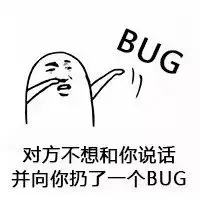两个数组的交集
349. 两个数组的交集
示例 1:
1 | 输入:nums1 = [1,2,2,1], nums2 = [2,2] |
示例 2:
1 | 输入:nums1 = [4,9,5], nums2 = [9,4,9,8,4] |
提示:
1 <= nums1.length, nums2.length <= 10000 <= nums1[i], nums2[i] <= 1000
说明: 输出结果中的每个元素一定是唯一的。 我们可以不考虑输出结果的顺序
思路
这道题目,主要要学会使用一种哈希数据结构:unordered_set,这个数据结构可以解决很多类似的问题。
第二种解法使用c语言实现,见下文。
使用数组来做哈希的题目,是因为题目都限制了数值的大小。如果没有限制数值的大小,就无法使用数组来做哈希表了。而且如果哈希值比较少、特别分散、跨度非常大,使用数组就造成空间的极大浪费。此时就要使用另一种结构体set。
关于set,C++ 给提供了如下三种可用的数据结构:
- std::set
- std::multiset
- std::unordered_set
std::set和std::multiset底层实现都是红黑树,std::unordered_set的底层实现是哈希表, 使用unordered_set 读写效率是最高的,并不需要对数据进行排序,而且还不要让数据重复,所以选择unordered_set。
在C++11,使用for循环遍历数组中的元素时可以这样:
for(int num : nums)//其中,nums是数组名字。
unordered_set容器和vector容器一样,可以使用insert()插入元素,begin(),end()迭代器跳转到容器开头或者结尾,还可以用find()查找容器中存储的值。
c++代码如下:
1 | class Solution { |
因为c语言没有unordered_set容器可供使用,且题目所给的数据有一个范围,虽然范围较大,用数组做的话浪费内存。
思路是,先构建一个hash数组,对hash数组中的num1[i]的位置写值,然后再 遍历num2数组,查找对应位置的hash数组有没有存值,有的话则说明元素重复。
c语言代码如下所示:
1 | /** |
https://xmuter.github.io/2024/03/18/%E4%B8%A4%E4%B8%AA%E6%95%B0%E7%BB%84%E7%9A%84%E4%BA%A4%E9%9B%86/
本博客所有文章除特别声明外,均采用 CC BY-NC-SA 4.0 许可协议。转载请注明来自 XMUTer的技术小站!








